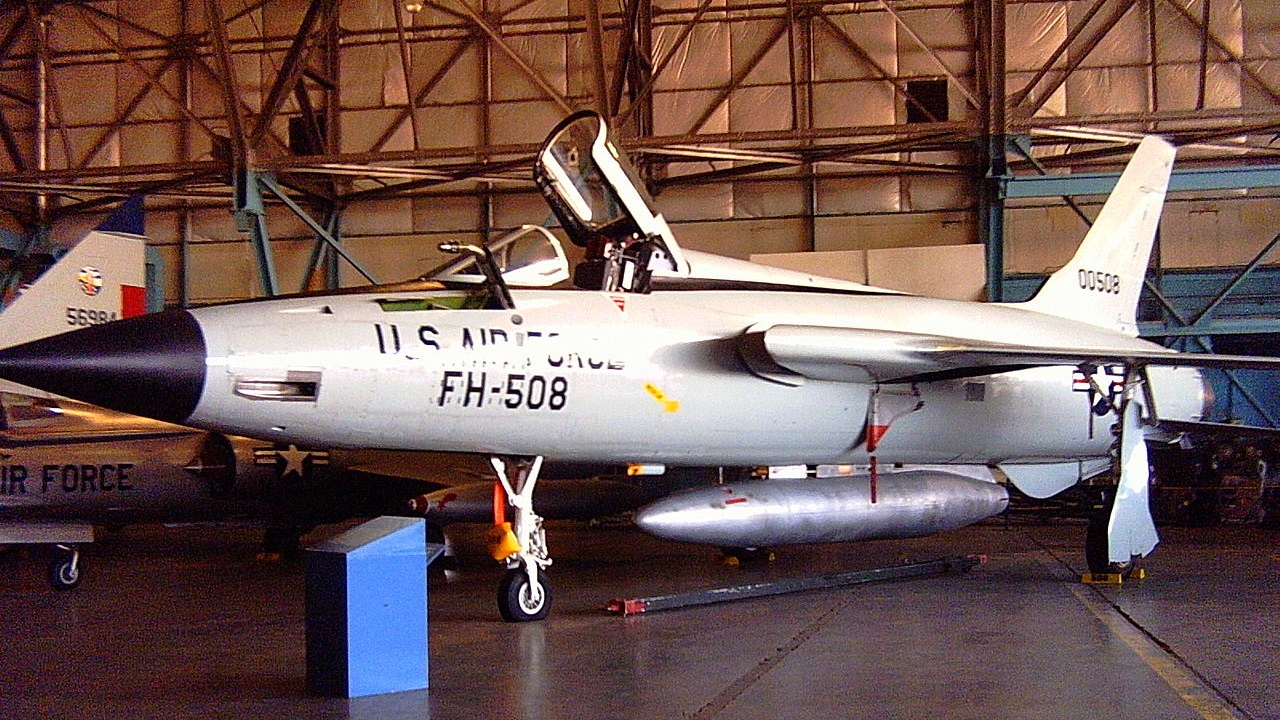“Don’t give me an F-105. / ‘Cause I love being alive. She’s great for attack, she soaks all the more flak, / Don’t give me an F-105.” Thus goes one of the verses to a song titled “Give Me Operations,” an old traditional humorous Air Force fighter pilot song best known for being performed by Oscar Brand, the so-called “Dean of American Folk Music.” The verse refers to the Republic F-105 Thunderchief fighter-bomber, AKA the “Thud,” which is simultaneously one of the famous and most infamous warbirds to serve in the Vietnam War.
“She Totes More Bombs Than a B-17…”
“Famous,” that is, for her speed and impressive payload. “Infamous,” that is, for her rather unfortunate tendency to blow up in midair, hence the inspiration for the “Thud” sobriquet. The F-105 had the highest non combat accident rate of any USAF fighter. As noted by aviation author Dario Leone, founder and editor of The Aviation Geek Club, “Eventually as told by Spitzmiller, while the name Thunderchief was appealing to Republic and its PR department, those who flew this heaviest fighter of its time, with a wing loading that guaranteed a high descent rate when the engine faltered… applied another name. Whether it was the sound of 50,000 pounds of metal uncontrollably impacting the earth, or the light-hearted shortening of the name Howdy Doody’s Indian rival, Chief Thunderthud, the F-105 became known affectionately as the ‘Thud’ by those who flew and maintained it.”
Howard Plunkett, author of F-105 Thunderchiefs: A 29-Year Illustrated Operational History, with Individual Accounts of the 103 Surviving Fighter Bombers, elaborates further: “A ‘constant problem’ is a bit understated. Fuel leaks and overheating caused explosions and aircraft losses. Safety Pack II was the mod that installed the cooling scoops on the left fuselage (among other things) during March – July 1965. It was probably the most significant mod to the F-105 and fixed the problem in time for combat deployments that year.”
Yet the Thud was still loved by the pilots who flew her and the ground crews that kept her flying. She also earned the respect of the pilots of the F-4 Phantom, America’s mainstay air-to-air jet fighter over the deadly skies of Vietnam. As Dick Jonas (Lt. Col, USAF, Ret.), a Vietnam War F-4 pilot who later became a professional singer known as “the fighter pilot’s minstrel,” warns in the spoken intro to his song “Thud Pilot, “Don’t ever badmouth a Thud, or a Thud pilot, where a Phantom driver can hear you. It might cost you a few teeth.”
Republic Aviation’s F-105 Thunderchief made her maiden flight on 22 October 1955 and was officially introduced into U.S. Air Force service on 27 May 1958. The plane was initially designed for nuclear strike. More specifically, for high-speed low-altitude penetration carrying a single thermonuclear device, the flip side to the slow & lumbering B-52’s high-altitude approach to a would-be nuclear war with the Soviets. Needless to say, WWIII and its resultant nuclear Armageddon never happened, so the Thunderchief soon found itself assigned to conventional air-to-ground attack duties.
In that role, the F-105 packed one hellacious arsenal. Although a single-engine fighter plane, the Thud could carry a heavier bomb load than the multi-engine heavy bombers of WWII such as the B-24 Liberator and B-17 Flying Fortress, to the tune of 14,000 pounds (6,400 kg) worth of ordnance. What’s more, this fighter-bomber could tow that payload at a very high rate of speed; one particular F-105B set a world speed record in December 1959: 1,216 mph over a 62-mile circuit that required the pilot to maintain a precise course while pulling a steady 3.5 Gs for three minutes.
Thud Ridge
The Thunderchief soon found itself to be one of the primary attack planes of the Vietnam War, with over 20,000 F-105 flown over the course of the conflict. The all-weather F105D variant in particular was initially the only USAF jet capable of penetrating North Vietnam’s Soviet-sourced defenses. Thuds flew more than 75 percent of all the bombing sorties against North Vietnam, including the hair-raising “Wild Weasel” missions that performed Suppression of Enemy Air Defenses (SEAD) duties. Two of these Wild Weasel Thud pilots, then-Capt. Merlyn H. Dethlefsen (eventual Col.) and then-Maj. (later lt. Col.) Leo K. Thorsness, earned the Medal of Honor.
Those sorties came at a terrible price, however. As if all of the aforementioned non-combat mishaps weren’t tragic enough, 320 Thuds—out of 833 total airframes produced—were lost in combat over Vietnam, making for the highest loss rate of any U.S. aircraft during the war, which soon compelled the USAF to make the F-105 the only American aircraft to be removed from combat operations due to high loss rates (though the plane still performed Wild Weasel duties all the way until the plane’s retirement 1984).
The morbid moniker “Thud Ridge” would be bestowed upon a mountainous landmark northwest of Hanoi. Though the F-105 had super speed, she lacked maneuverability, rendering the warbird vulnerable to victimization by the more nimble MiG-21 “Fishbed” and MiG-17 “Fresco” fighters piloted by the North Vietnamese Air Force, which downed 15 and seven Thunderchiefs respectively.
“…My F-105 Has a Gun and She’s Mean”
However, the air-to-air combat picture for the Thud wasn’t a one-sided affair, as she did pack a 20mm M61 Vulcan cannon and AIM-9 Sidewinder heat-sinking missiles. Though the Thunderchief didn’t shoot down any of the Fishbeds, she tallied 27.5 air-to-air kills against the Fresco—two with the Sidewinders and the rest with the gun—thus making for an overall positive kill ratio of 1.25:1. The aforementioned Maj. Thorsness nabbed one confirmed MiG-17 kill and one probable on his Medal-winning mission.
Arguably the most famous air-to-air combat photo from the war is from gun camera footage of a MiG-17 being blasted out of the sky by Major Ralph Kuster Jr. from the 469th Tactical Fighter Squadron.
Where Are They Now?
In the course of the F-105’s career, 612 were destroyed by various causes, a whopping 75% of the entire production run. 96 of them remain today, spread out across museums and boneyards in six different countries, but alas, none of them are airworthy. Amongst the many Stateside museums where you can view a Thunderchief static display are the Steven F. Udvar-Hazy Center in Chantilly, Virginia and the National Museum of the United States Air Force at Wright-Patterson AFB in Dayton, Ohio.
Bonus Photo Essay: Meet the F-15 Up Close
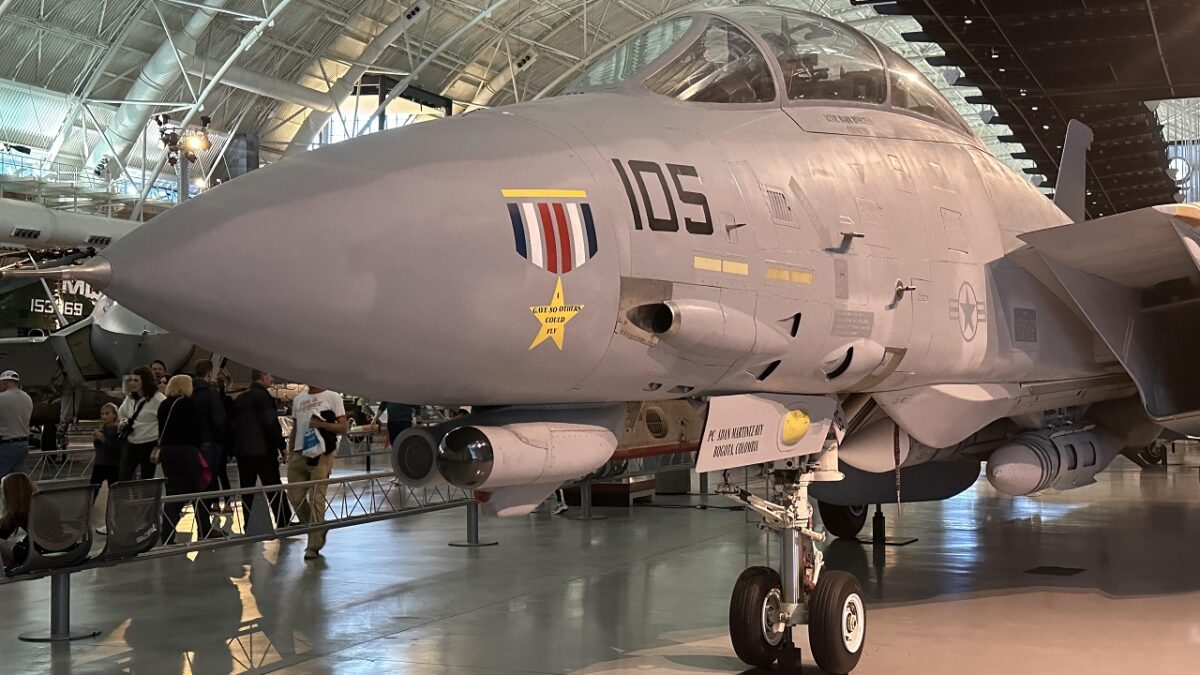
F-14 Tomcat. Image taken at National Air and Space Museum on October 1, 2022. Image by 19FortyFive.
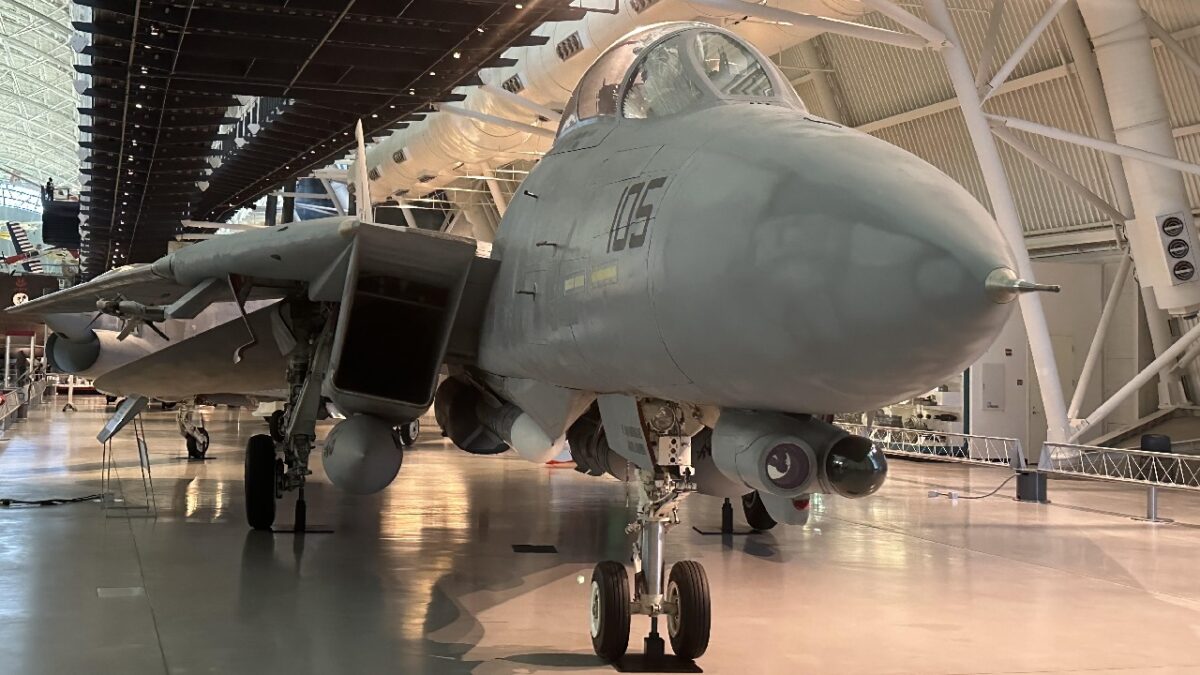
F-14 Tomcat. Image taken at National Air and Space Museum on October 1, 2022. Image by 19FortyFive.
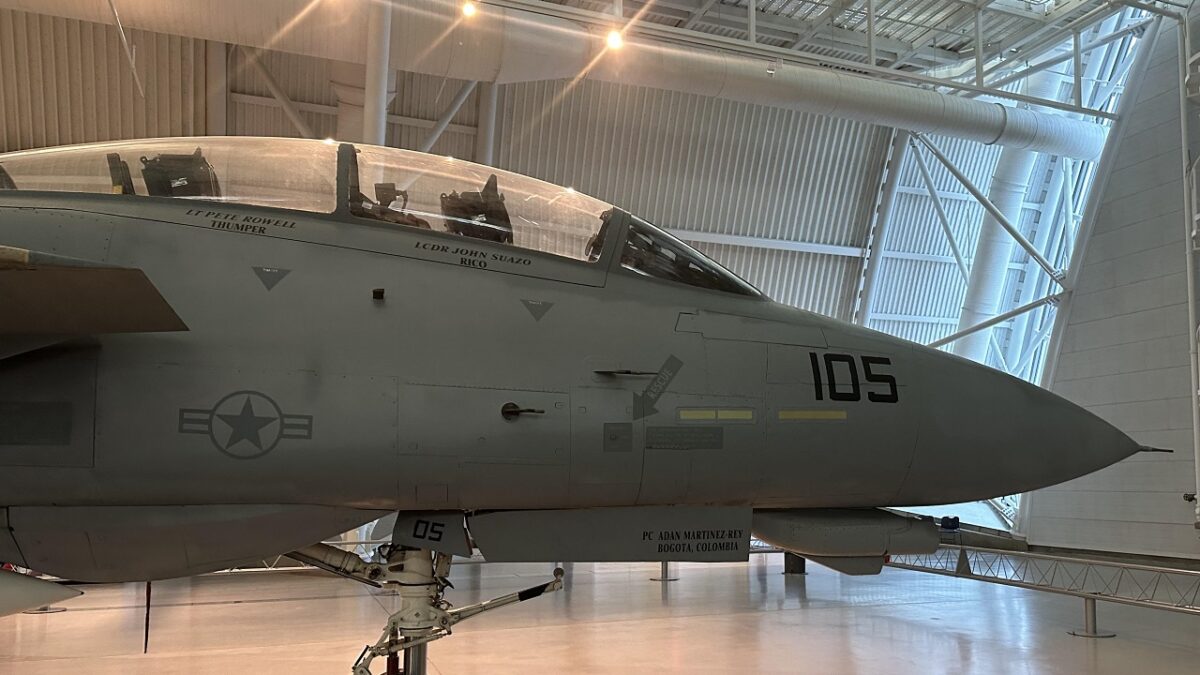
F-14 Tomcat. Image taken at National Air and Space Museum on October 1, 2022. Image by 19FortyFive.
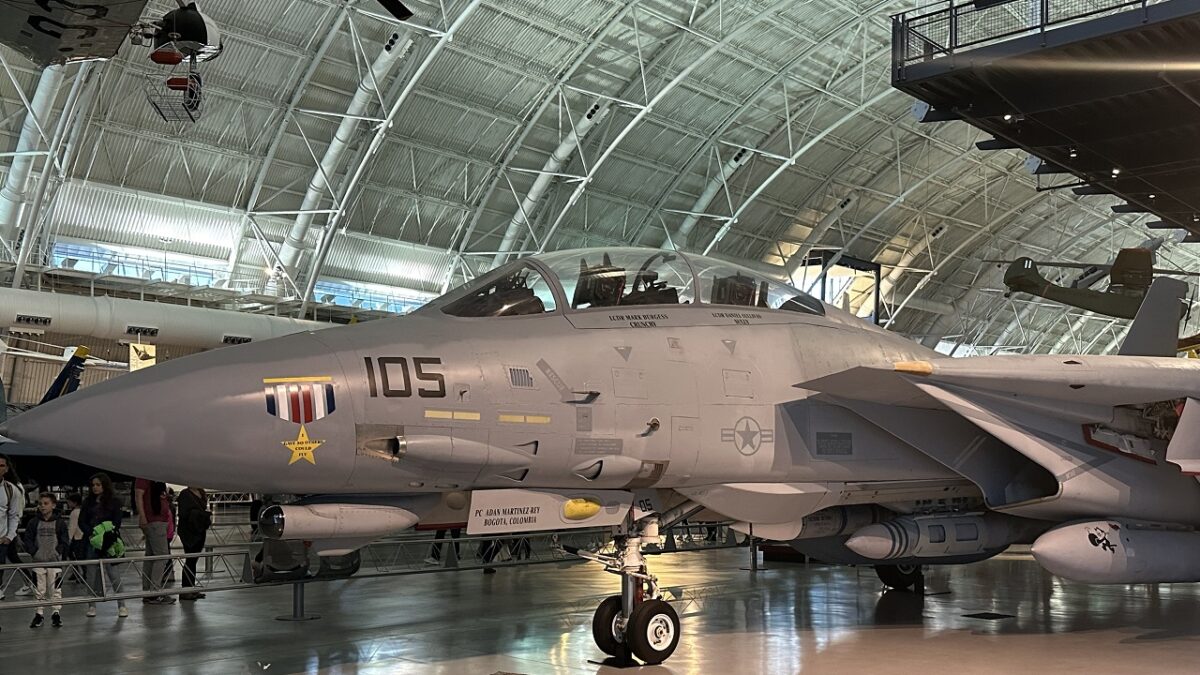
F-14 Tomcat. Image Taken at U.S. Air and Space Museum outside of Washington, D.C. Image Credit: 19FortyFive.com
More: Could Mike Pence Beat Donald Trump in 2024?
More: NATO vs. Russia – What World War III Would Look Like
Christian D. Orr is a former Air Force officer, Federal law enforcement officer, and private military contractor (with assignments worked in Iraq, the United Arab Emirates, Kosovo, Japan, Germany, and the Pentagon). Chris holds a B.A. in International Relations from the University of Southern California (USC) and an M.A. in Intelligence Studies (concentration in Terrorism Studies) from American Military University (AMU). He has also been published in The Daily Torch and The Journal of Intelligence and Cyber Security. Last but not least, he is a Companion of the Order of the Naval Order of the United States (NOUS).

